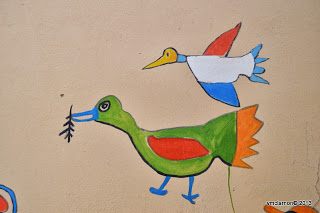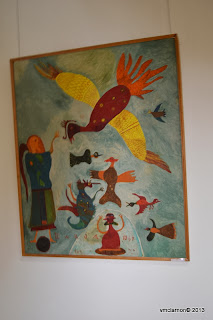| I3. XI 1970. Ilija pokreće inicijativu za osnivanje Muzeja naivne umetnosti sledecim pismom: SKUPŠTINI OPŠTINE ŠID Bogat godinama, a siromah zdravljem, u dobroj nameri i želji da svojim skromnim prilogom doprinesem, koliko toliko kulturi svog rodnog mesta, rešio sam, da jedan deo rezultata mog slikarskog rada - 300 slika, predam mojoj opštini u nadi da ove slike za Šid, njegovu kulturu, bilo sada, bilo za buduća pokolenja imaju neku vrednost. Pored mojih slika, darujem i nešto slika od drugih uglednih slikara takozvanih naivnih slikara, sa kojima sam razmenjivao slike, a delom su ih nabavili moji sinovi koji se pridružuju mojoj želji i nameri da darujući ove radove predložim opštinskoj Skupštini da se osnuje muzej naivne umetnosti u Šidu, kojega ću i dalje pomagati ja i moja porodica darovanjem mojih radova. Smatram, da su svi izgledi da taj Muzej ne ostane u granicama Šida, vec da se može lepo razvijati u medjunarodnom okviru. Zato sam ovoj zbirci dodao nekoliko radova stranih umetnika da joj to označi pravac razvitka. Verujem da će ovaj moj skromni doprinos pomoći mladjima, a možda i onim budućim da imaju nešto više od onoga što je meni lično mnogo nedostajalo, a to je kultura. Nadam se, da će se tim putem našem Šidu pružiti mogućnost da učestvuje u kulturnom životu društva, a njegovi stanovnici medju mojim slikama da se osećaju lepše, kao i ja što sam se osećao medju slikama mog školskog druga Save Šumanovića¹, čiji je primer, mada sa velikim zakašnjenjem delovao na mene. Šid dana 3 novembra 1970 godine | |||||
Sava Šumanović Gallery
Sava Šumanović, the most important Serbian painter of the first half of the 20th century, spent his youth and last days of life in Šid, where his hometown gallery is located nowadays. Gallery of Sava Šumanović was established in 1952 as a gift from Persida Šumanović, the painter's mother, with the aim to present the town of Sid with 417 of her son's paintings, as well as the house in which they are exhibited. Vesna Burojević, art historian and director of the Gallery proudly stresses that Gallery of Sava Šumanović posseses majority of the famous painter' s works.
Sava Šumanovic was born in 1896 in a wealthy and respected bourgeois family, in the town of Vinkovci. Soon after his birth, the family moved to Šid. The most important event in his career was certainly going to Paris at the end of the 1920s. The half year spent in the studio of the famous art professor Andre Lhot, who considered Sava Sumanovic as his most talended student and whose artistic direction was post-cubism, forever changed the life of the young artist. He became the Serbian painter who worked in a special kind of late Constructivism, much like Andre Lhot – in the reflection of Cubism. All of that made Sava Šumanovic a pioneer of modern trends in Serbian painting, which became modern largely due to Šumanovic's ability to accept and understand changes in art. Full of enthusiasm and new revelations, he experienced disappointment in 1921 at his first exhibition in Zagreb, after his return from Paris. The provincial and conservative audience in Zagreb did not understand modern art. After return from Paris Sava Šumanović painted nudes and the nearby landscapes of Šid which remained dominant for the rest of the painters life. War came to the small town of Sid which became a part of the Indenpendent State of Croatia. Cyrillic alphabet was forbidden and Sava Šumanović, out of protest refused to sign himself and marked his paintings only by the year of their origin. On Assumption, 28 August 1942 Sava Šumanović was arrested and taken to Sremska Mitrovica along with 120 locals where they were executed by profascist collaborators. That was how the life of one of the greatest Serbian painters of all time tragically ended. What was left behind was a lot or prepared painting material and paintings....
The most famous paintings of Sava Šumanovic belong to the peak of the modern Serbian art, "Breakfast on Grass", "Bathers" and "Drunken Boat".











No comments:
Post a Comment